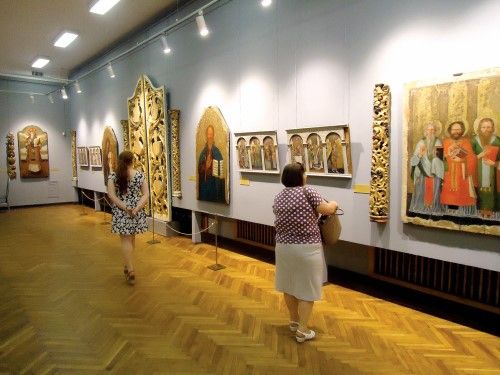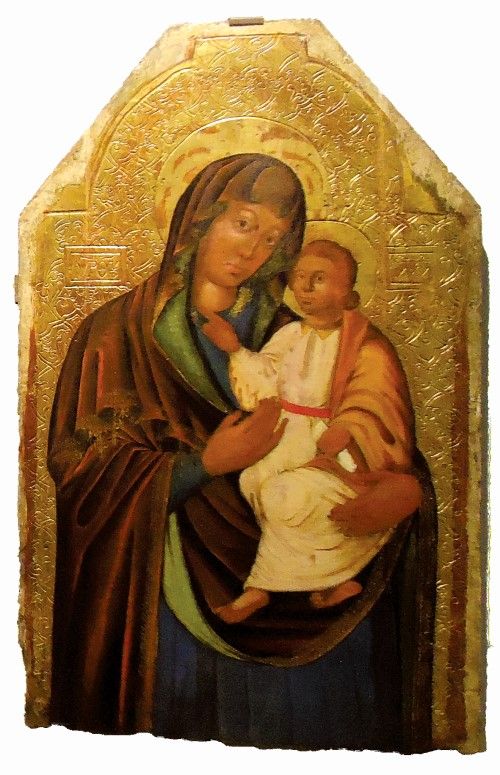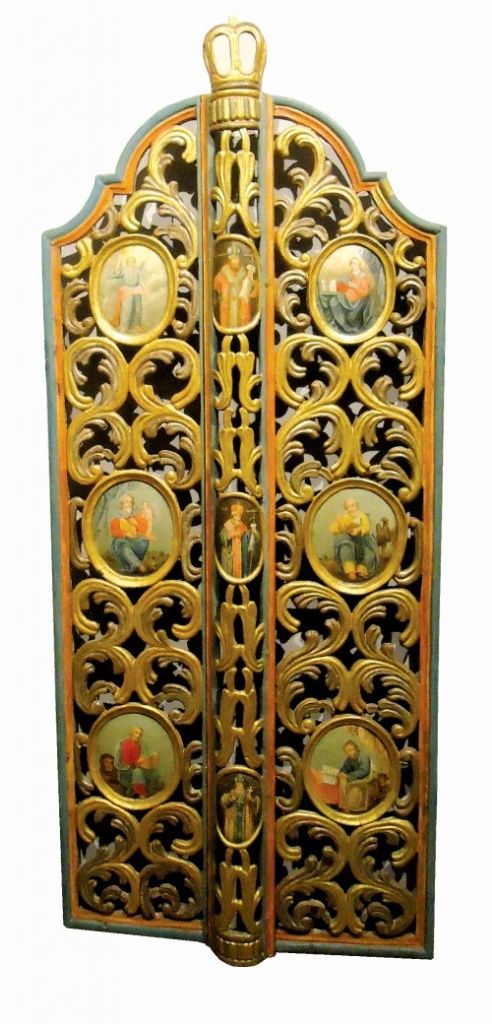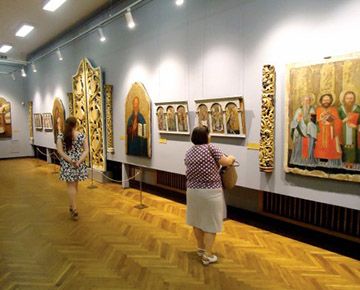
Since the times of early Christianity, altars have always occupied a separate space within a church, apart from the main congregation’s seating area. By the 5th-7th centuries, the sanctuary screen had become a screen upon which sacred symbolic images were depicted, facing the faithful, and revealing the spiritual essence of the altar’s function, and that of the Church.
The exhibition discloses the diversity of iconostasis, e.g., as a rule, the most important Christian holidays are portrayed in its second layer. Meanwhile, the image of Christ, who is to judge the living and the dead, is placed at the centre of the third layer, with depictions of the Blessed Virgin Mary and John the Precursor on either side, praying to the Saviour to forgive human sins. These supplement each other and offer full disclosure of the Church’s essence.

Exhibits delight every visitor
During the 17th and 18th centuries, Belarusian iconostasis flourished. Under the influence of Northern European Baroque, relief carvings of flowers and fruits (particularly berries and bunches of grapes) became popular. Generous gilding adorned icons and carvers from Vitebsk, Mogilev, Orsha and Shklov became especially famous for their mastery. In the second half of the 17th century, masters filled Moscow churches with Belarusian carved iconography. Several examples remain, created by Belarusian masters under the guidance of Klim Mikhailov, Elder Ippolit, and Stepan Zinoviev.
 In the late 1920s, churches in Vitebsk, Mogilev, Mstislavl and Orsha preserved carved and gilded iconostases from the second half of the 17th century; sadly, these were destroyed by Soviet powers in the early 1930s. That in St. Nicholas Church in Mogilev partially survived and has been renovated by contemporary carvers, gilders and icon painters. In the western part of Belarus, the 1960s saw much destruction of ‘religious cult artefacts’, under state atheism; however, museums often became shelters for sacred art pieces.
In the late 1920s, churches in Vitebsk, Mogilev, Mstislavl and Orsha preserved carved and gilded iconostases from the second half of the 17th century; sadly, these were destroyed by Soviet powers in the early 1930s. That in St. Nicholas Church in Mogilev partially survived and has been renovated by contemporary carvers, gilders and icon painters. In the western part of Belarus, the 1960s saw much destruction of ‘religious cult artefacts’, under state atheism; however, museums often became shelters for sacred art pieces.
The current exhibition showcases almost complete iconographic examples from the 18th century, from Prechistenskaya Church in Shereshevo; they depict 24 local and apostolic scenes, covering a range of holy festivals.
In 1958, the State Art Museum of the BSSR (now, the National Art Museum of the Republic of Belarus) undertook the first expedition to collect sacred art, gathering the complete iconostasis from a church (soon destroyed). This was brought from the Brest Region’s Shereshevo to the museum. Deliberate restoration and study began and, in 1979, a Museum of Ancient Belarusian Culture opened.

In 2009, with the blessing of the Patriarchal Exarch of all Belarus, the Metropolitan of Minsk and Slutsk, Filaret, Zhirovichi Monastery donated seven ancient icons from Assumption Cathedral, dating from around 1730. These were given to the National Art Museum, where restorers removed the upper layers to find evocative European Baroque style paintings. Twelve apostles, four prophets and the Zhirovichi Icon of the Mother of God are exhibited at the exhibition, and are unrivalled. The major city and monastic cathedrals of Vilnius, Vitebsk, Minsk, Mogilev and Pinsk must once have been decorated in similar pieces but these have not survived.
The current exhibition includes the Holy Gates (in Polesie, they are called Gates of Paradise) and individual icons donated to the National Art Museum by various Belarusian rural churches.
A unique example of classical church art is a distinct work depicting the twelve apostles, from Bezdezh. This expressive work was created by an unknown painter of the academic school (probably, from Vilnya) sometime in the 18th or 19th century. Some visitors may recognise the style and be able to guess the name of the artist.
By Veniamin Mikheev











